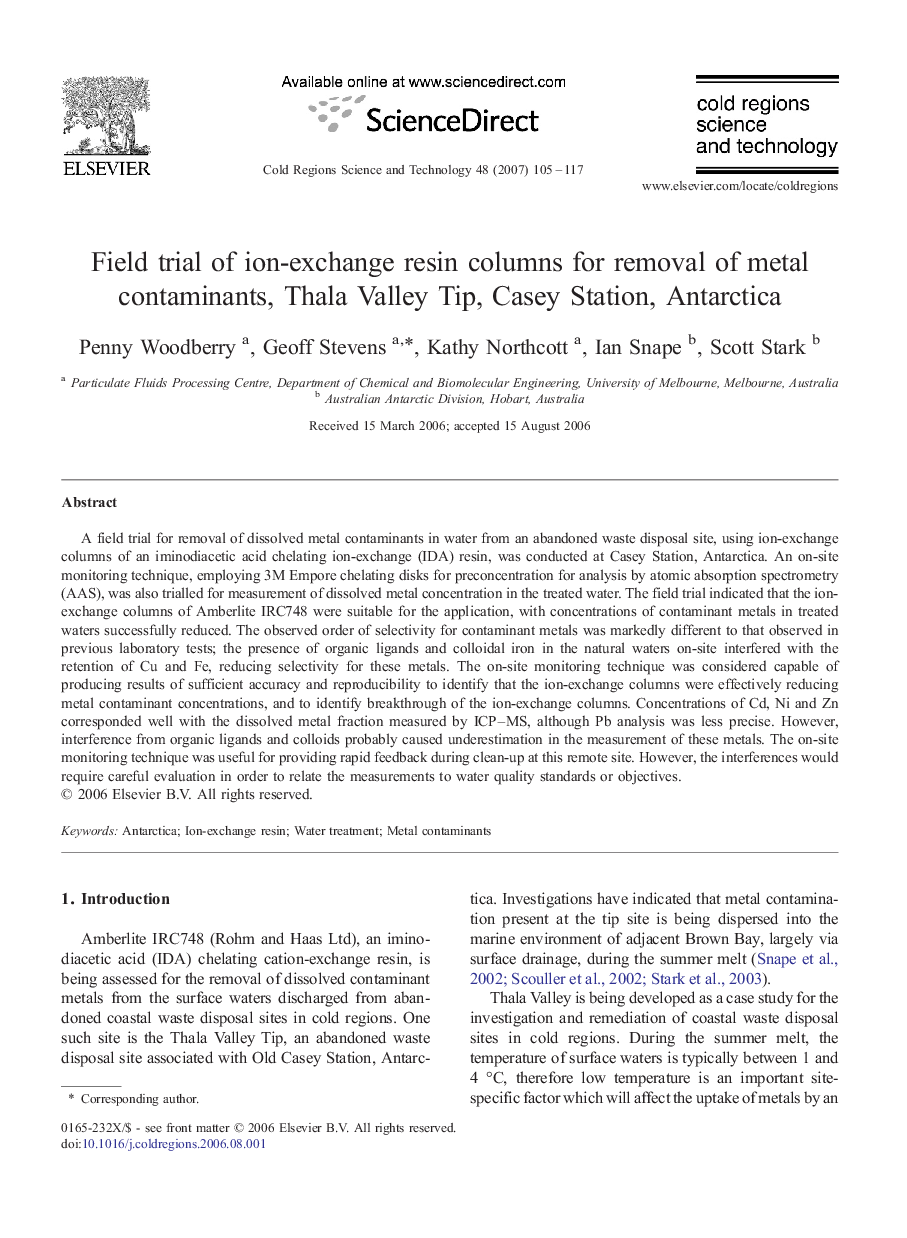| Article ID | Journal | Published Year | Pages | File Type |
|---|---|---|---|---|
| 4676868 | Cold Regions Science and Technology | 2007 | 13 Pages |
A field trial for removal of dissolved metal contaminants in water from an abandoned waste disposal site, using ion-exchange columns of an iminodiacetic acid chelating ion-exchange (IDA) resin, was conducted at Casey Station, Antarctica. An on-site monitoring technique, employing 3M Empore chelating disks for preconcentration for analysis by atomic absorption spectrometry (AAS), was also trialled for measurement of dissolved metal concentration in the treated water. The field trial indicated that the ion-exchange columns of Amberlite IRC748 were suitable for the application, with concentrations of contaminant metals in treated waters successfully reduced. The observed order of selectivity for contaminant metals was markedly different to that observed in previous laboratory tests; the presence of organic ligands and colloidal iron in the natural waters on-site interfered with the retention of Cu and Fe, reducing selectivity for these metals. The on-site monitoring technique was considered capable of producing results of sufficient accuracy and reproducibility to identify that the ion-exchange columns were effectively reducing metal contaminant concentrations, and to identify breakthrough of the ion-exchange columns. Concentrations of Cd, Ni and Zn corresponded well with the dissolved metal fraction measured by ICP–MS, although Pb analysis was less precise. However, interference from organic ligands and colloids probably caused underestimation in the measurement of these metals. The on-site monitoring technique was useful for providing rapid feedback during clean-up at this remote site. However, the interferences would require careful evaluation in order to relate the measurements to water quality standards or objectives.
